What special thing could we do for our 25th wedding anniversary? Travel or buying special “stuff” didn’t appeal to us. What would? Something for our yard. Something we could enjoy for many months and years. A pond and stream fit the bill! (You can read our story in the Reflections at the bottom of this page.)
After getting an estimate for a professionally-built water feature ($6K!!), we decided to build it ourselves. We bought an Aquascape system, which provided all the materials we would need. According to their literature, the essential parts of our pond ecosystem were plants, fish, rocks and gravel, the BioFalls/Skimmer/pipe circulation system, and the addition of beneficial bacteria.
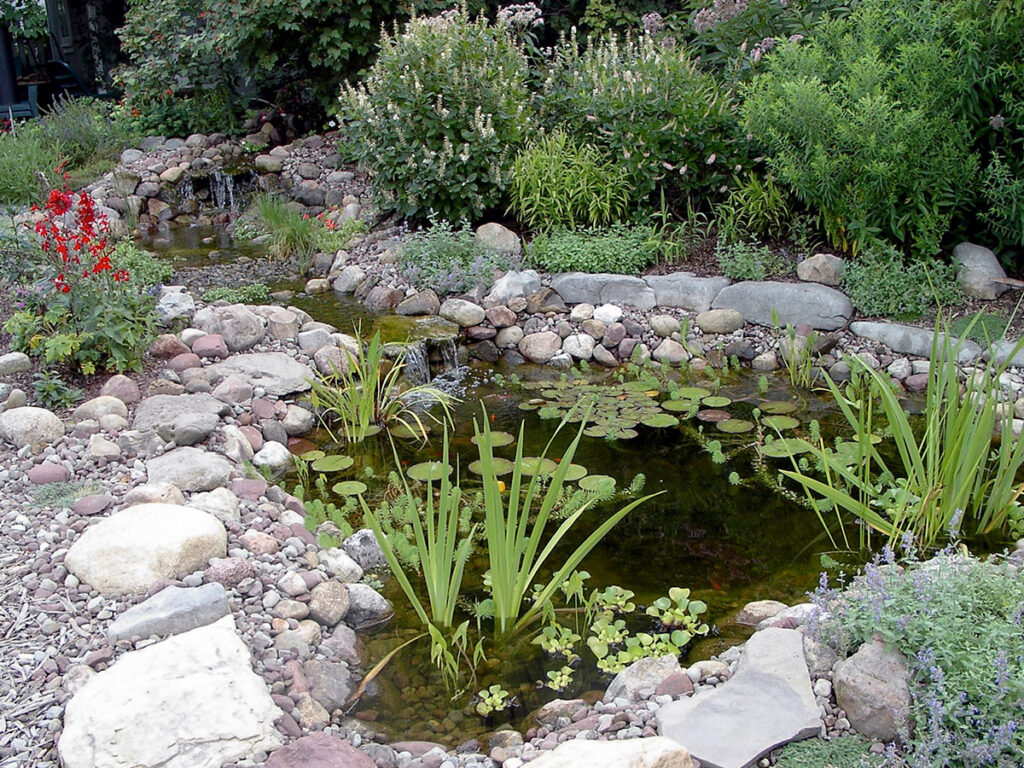
As we look back, it’s truly amazing that this pond worked out so well!
We didn’t know anything at all about building water features. And even more important, we didn’t know anything about aquatic plants nor what types of creatures might visit.
Here’s how we built the pond, how we’ve maintained it, (and how it has evolved) in the years since it was built in 2002.
And we enjoyed this so much that we later built a wildlife pond, too!
Water features
We’ve tried to approximate a natural system as much as possible. It’s distressing to see so many merely ornamental water features installed in home landscapes — not only not wildlife-friendly, but sometimes actively wildlife-UNfriendly. And adding koi, a non-native fish, is decidedly wildlife-UNfriendly! And even though we enjoyed the small feeder goldfish we initially added, we weren’t unhappy when they didn’t survive the winter.
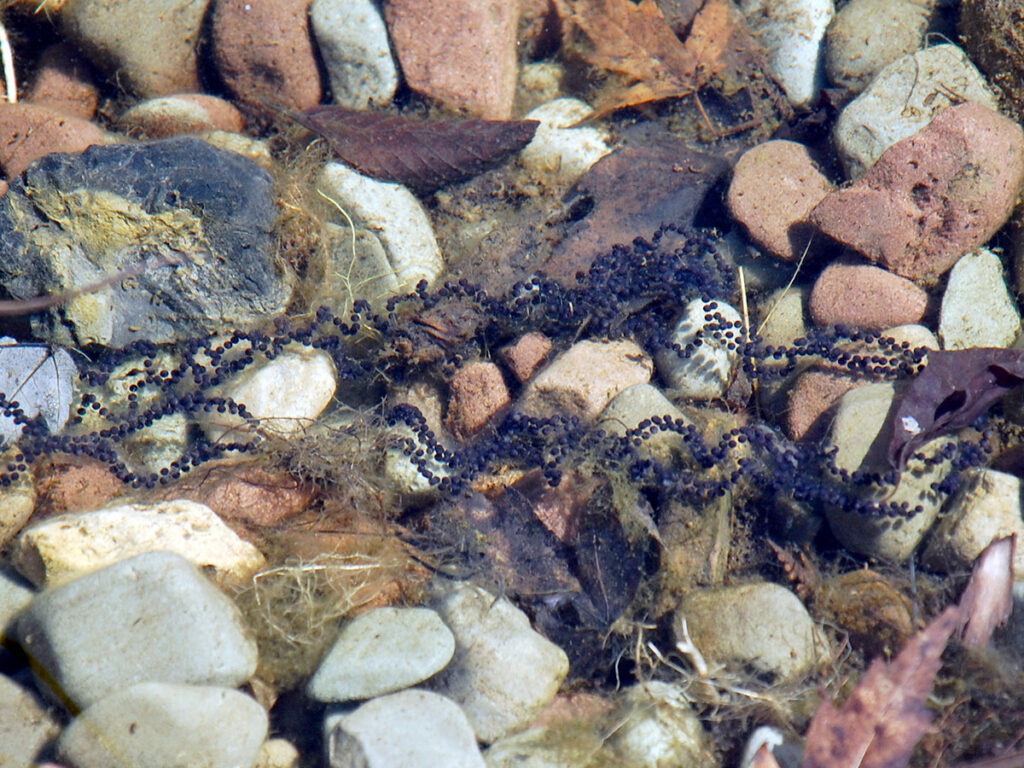
We’ve even heard of people who discard the long strings of “unsightly” toad eggs they discover after toads have found their ponds and mated!
We hope our water features have more environmental benefits than negatives.
The negatives
The biggest negative, of course, is that it requires electricity to pump the water around to operate the stream. This is distressing since we’re gravely concerned about climate change.
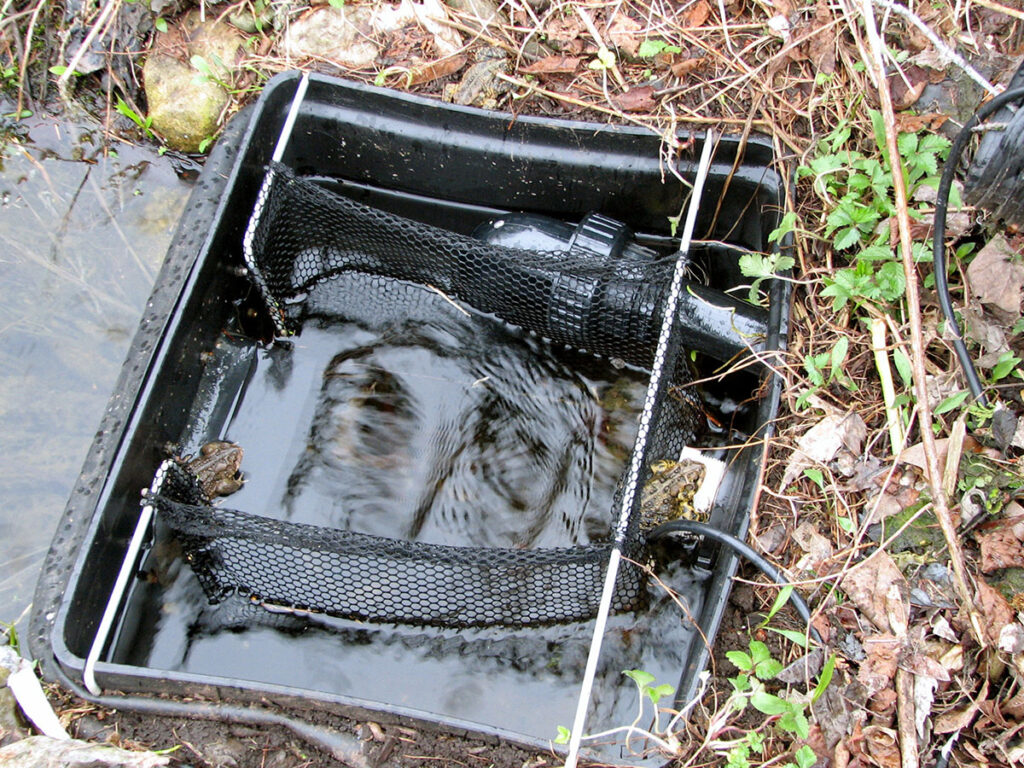
We’ve looked into solar energy for the pond circulation system, but there weren’t any systems (in any way affordable) that would move water around to the extent required.
We’ve minimized our energy use in all sorts of ways in our home, in our garden, and in our transportation choices. And we have also built another pond that doesn’t require any energy.
Water use: We sometimes have to add water, especially since we’ve been in a bit of a localized drought the last few years. But aside from the edible garden, we otherwise don’t use much water in our landscape. We don’t water the lawn or anything other than newly-transplanted plants or drought-stressed plants. (And we seldom wash our car …)
The positives
The HUGE plus of our pond and stream is that we’re providing habitat for an expanded range of plants and animals.
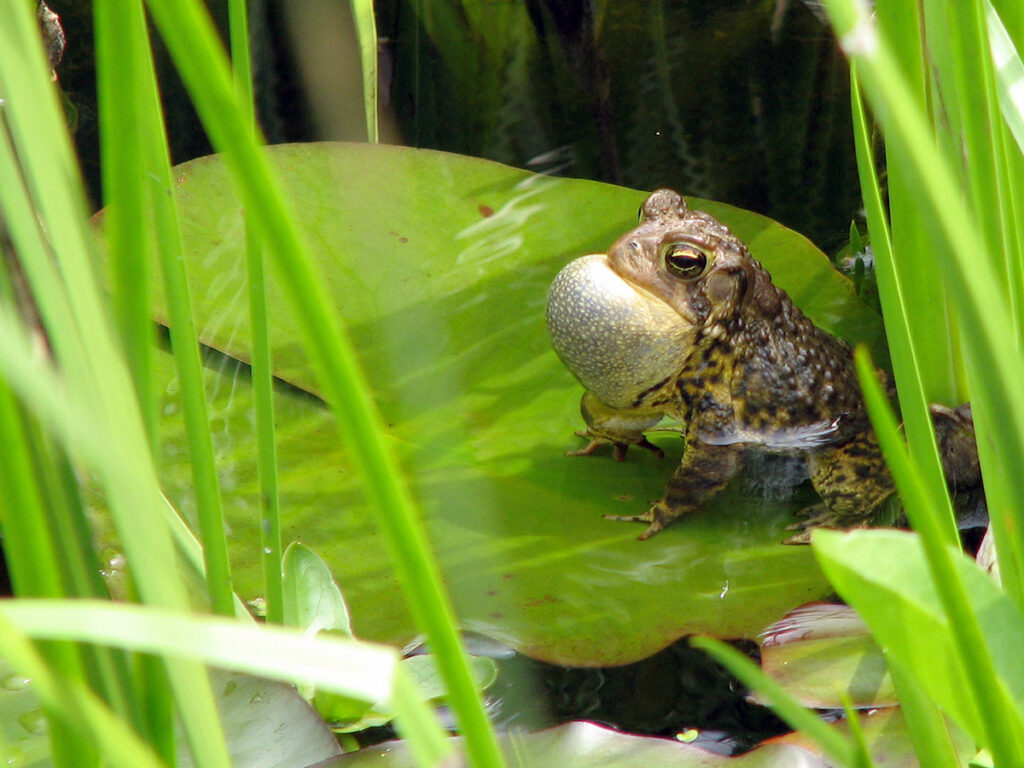
We’ve been surprised and thrilled to see dragonflies and damselflies visiting our yard, migrating birds use our yard as a stopover spot, and toads mating and producing offspring in our pond.
We love being serenaded with their musical mating calls and entertaining us with their hijinks.
Although we initially followed Aquascape’s recommended cleaning schedule, we now limit our cleaning so we aren’t removing dragonfly larvae and all the smaller — even microscopic — creatures that live there. As with the rest of our yard, creating an “ooh and aah” decorative landscape isn’t our priority.
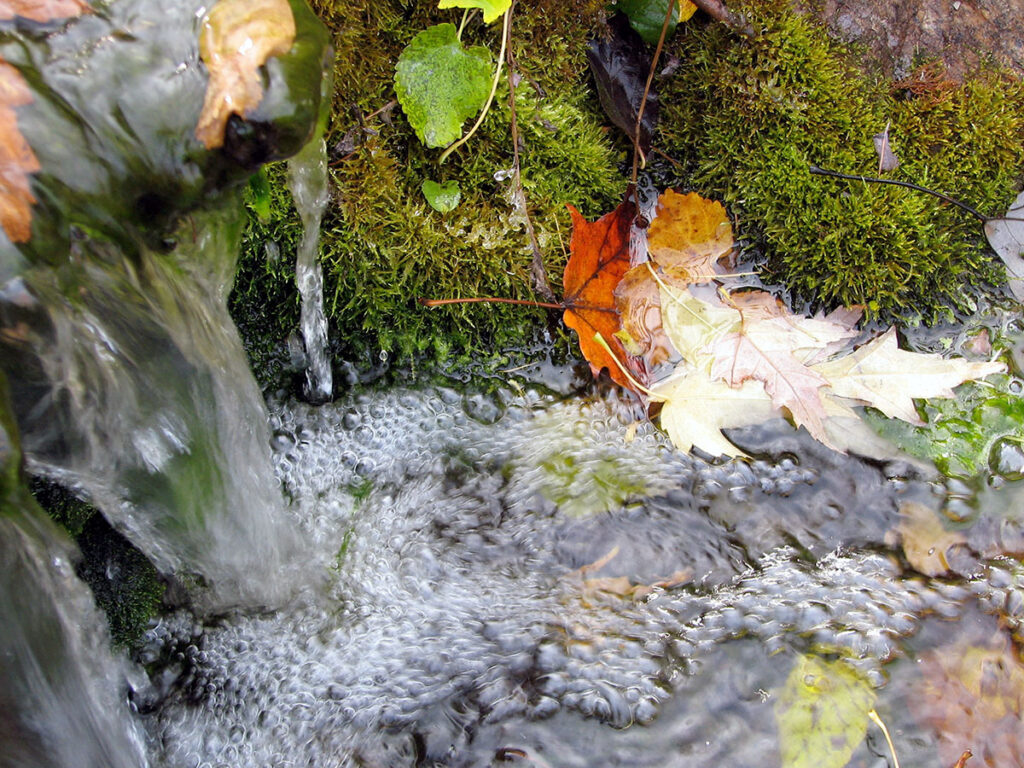
Another positive — not to be discounted — is that our water habitat increases our knowledge of and deepens our connection to yet another aspect of the natural world and strengthens our commitment to heal and defend the earth.
We also find it’s so interesting and increases our personal well-being so much that it eliminates car trips to go “visit” nature or to travel to other places for amusement. And this is a non-trivial outcome.
Resources
- National Wildlife Federation:
- USDA Natural Resources Conservation Service:
- Migratory Dragonfly Partnership:
- Backyard Ponds – Guidelines for creating and managing habitat for dragonflies and damselflies. Excellent resource!
- PennState Extension:
- Conservation Foundation:
- Loudoun Wildlife:
- People sharing their pond experiences:
- Biggs’ Wildlife Pond – excellent website about a wildlife pond in California that led to its owner writing a book on dragonflies.
- Robyn’s Pond Page – I’ve found some good information on these pages
Reflections
What are backyard ponds? Backyard ponds are wildlife oases. With increased urbanization, creating aquatic habitat in your backyard will not only create a haven for dragonflies and damselflies, but will afford refuge for a diverse community of wildlife.
~ Celeste Mazzacano et. al., Backyard Ponds: Guidelines for Creating and Managing Habitat for Dragonflies and Damselflies, published by the Migratory Dragonfly Partnership
Our reflection
We celebrated our 25th wedding anniversary in March 2002. We’ve been pretty frugal throughout these 25 years and celebrated our other anniversaries very modestly. But for our 25th, we wanted something special. What could be special enough for this milestone? A trip to Hawaii, a week at a fancy resort? These might be fun, but when they’re over, they’re over. Plus, these ideas seemed rather frivolous to our practical souls.
When we thought about what gives us the most pleasure, we realized that it’s being out in our yard, watching the plants and animals — a celebration of life. Besides being an interesting place to be, it’s where we’ve spent a lot of creative effort over all these years. Growing things and working on our yard has been a constant theme running through our marriage, right back to our tiny garden in our first apartment. What could be more appropriate than adding something to our yard? What could be more special than a pond, stream and waterfall? This was something that could give us pleasure day after day, year after year. We called a landscaper to design one for us.
Then we got the estimate. $6,000 for an 11 x 11 foot pond and 20-foot stream! We thought about the expense. It was a special anniversary, but still… Finally, we decided to purchase an Aquascape kit and do it ourselves. (Doing things ourselves is another theme running through our marriage.) The kit came with an instruction book and a video. We’ve never watched a video as many times as we watched that video! The whole project ended up costing about $3,000. It was certainly a worthy gift to ourselves for a special anniversary!
~ Janet
